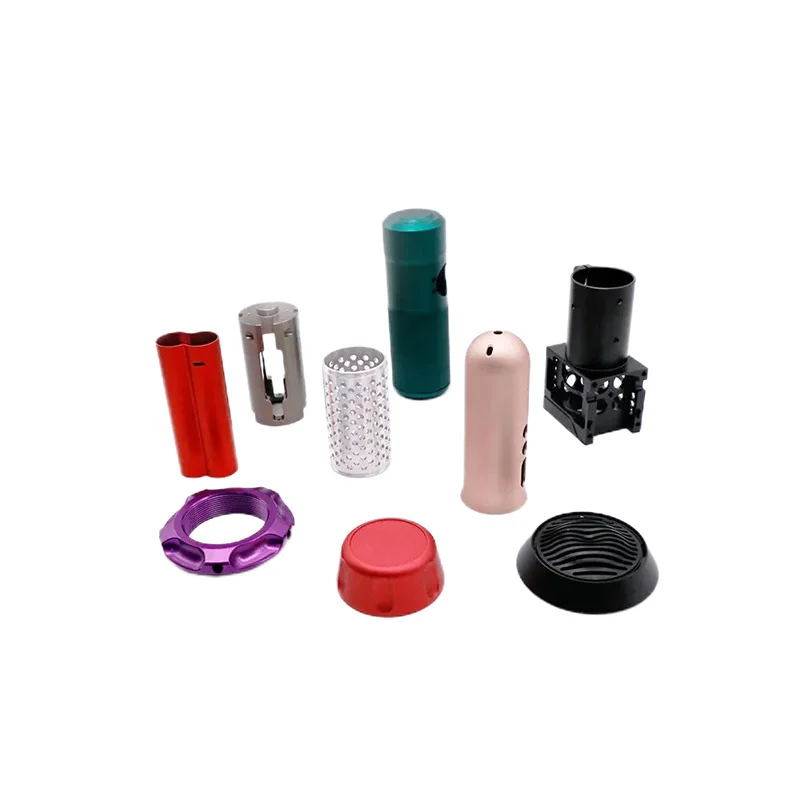- This topic is empty.
-
AuthorPosts
-
2025-10-11 at 6:33 pm #4856
In today’s rapidly evolving manufacturing landscape, the demand for custom turned parts has skyrocketed. These components are crucial in industries where accuracy, durability, and performance are non-negotiable. From aerospace engineering to medical devices, the ability to produce parts with micron-level precision has become a competitive advantage. In this blog post, as a professional CNC turning service factory, Vibo will share the advantages of custom high precision turned parts for sale, its manufacturing process, applications, etc.
Advantages of Custom High Precision Turned Parts
Custom high precision turned parts offer several benefits that make them indispensable in advanced manufacturing:
-
Exceptional Accuracy: Utilizing state-of-the-art CNC turning machines, manufacturers can achieve tolerances as tight as ±0.001 mm, ensuring every component fits perfectly.
-
Enhanced Durability: High-precision turning minimizes stress concentrations, resulting in parts with longer operational lifespans.
-
Material Versatility: These parts can be crafted from stainless steel, aluminum, titanium, and other advanced alloys, providing tailored mechanical properties.
-
Cost Efficiency: While high precision may seem costly, reducing errors and waste in production ultimately lowers long-term costs.
By combining precision engineering with customized designs, businesses can significantly enhance product reliability and performance.
Manufacturing Process of Precision Turned Components
The production of custom high precision turned parts involves meticulous planning and advanced machining techniques:
-
CAD Modeling and Prototyping: Engineers start with detailed 3D models, ensuring that every dimension is optimized for functionality. Rapid prototyping allows for testing before mass production.
-
CNC Turning Operations: Computer Numerical Control (CNC) machines perform the turning process, rotating the raw material against cutting tools to achieve the desired shape and finish.
-
Precision Finishing: Processes like grinding, polishing, and heat treatment refine the surface quality and enhance mechanical strength.
-
Quality Inspection: Coordinate Measuring Machines (CMM) and other advanced metrology tools verify dimensional accuracy, ensuring the parts meet stringent specifications.
This precise workflow guarantees the production of parts that are both reliable and consistent.
Applications of Custom High Precision Turned Parts
The versatility of custom high precision turned parts makes them suitable for various high-demand industries:
-
Aerospace Components: Critical for engines, landing gear, and structural parts where failure is not an option.
-
Medical Devices: Surgical instruments, implants, and diagnostic equipment require unparalleled accuracy.
-
Automotive Engineering: Engine parts, transmission components, and suspension elements rely on high-precision machining for performance and safety.
-
Robotics and Automation: Customized components ensure smooth operation and reduced maintenance in automated systems.
-
Electronics and Telecommunications: Precision turned parts are used in connectors, housings, and heat sinks where tolerances are tight.
By adapting to specific industry requirements, manufacturers can deliver components that meet the most exacting standards.

Comparing Custom Turned Parts with Standard Machining
While standard machining is sufficient for many applications, custom high precision turned parts offer distinct advantages:
Feature Standard Machining Custom High Precision Turned Parts Tolerance ±0.05 mm ±0.001 mm Material Options Limited Wide range including specialty alloys Surface Finish Moderate Superior, smooth finishes Cost Lower initial cost Higher precision, lower waste and long-term cost Application Scope General use Critical and high-performance applications The table highlights why industries with stringent requirements increasingly prefer high-precision solutions.
Innovations Driving Custom Precision Turned Parts
Manufacturers are continually advancing the capabilities of custom high precision turned components through technology and innovation:
-
Multi-Axis CNC Machines: Allow complex geometries to be produced in a single setup, improving efficiency and accuracy.
-
Advanced Materials: The use of lightweight alloys and composites reduces weight while maintaining strength.
-
Automation and AI Integration: Smart systems monitor tool wear and optimize cutting parameters, minimizing errors.
-
Surface Engineering Techniques: Coatings and treatments enhance wear resistance, corrosion protection, and thermal stability.
These innovations enable the production of parts that were previously impossible or prohibitively expensive to manufacture.
Quality Assurance in High Precision Turning
Quality control is critical for custom high precision turned parts, especially in industries where safety and performance are paramount. Key quality assurance measures include:
-
Dimensional Verification: Using high-accuracy instruments such as CMM and laser scanning.
-
Material Testing: Assessing mechanical properties, chemical composition, and hardness.
-
Process Monitoring: Continuous inspection during production to detect deviations early.
-
Certification Compliance: Ensuring adherence to ISO, ASTM, or industry-specific standards.
Robust quality protocols guarantee reliability and minimize the risk of part failure.
Conclusion
As industries demand greater accuracy, efficiency, and reliability, custom high precision turned parts are becoming the cornerstone of advanced manufacturing. Their versatility, combined with technological innovation, ensures they can meet the complex requirements of aerospace, medical, automotive, and other high-performance sectors.
By investing in cutting-edge CNC machinery, advanced materials, and rigorous quality control, manufacturers can deliver components that not only meet but exceed expectations, shaping the future of precision engineering.
-
-
AuthorPosts
- You must be logged in to reply to this topic.
